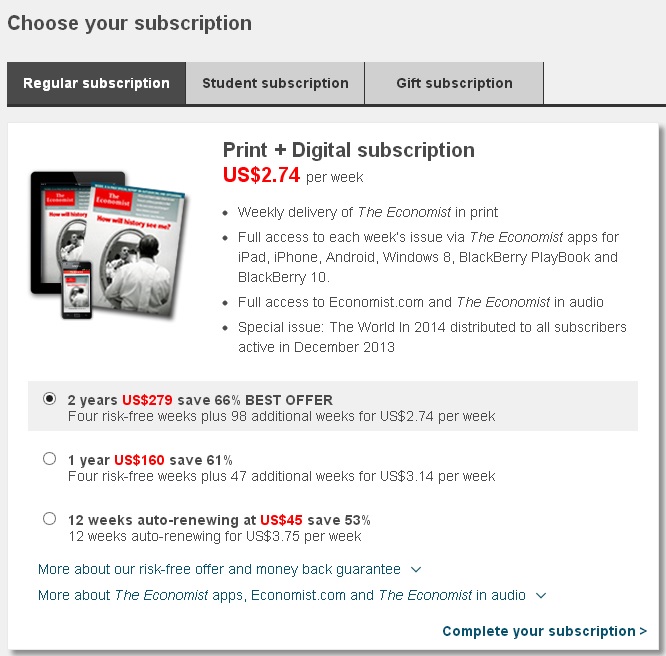
In our continuing series of subscription business models, we have covered newsletters and magazine subscriptions. In today’s series, we look at periodicals, which strike the same content characteristics of both magazines and newsletters.
Periodicals are essentially content driven websites that may address general or specialized topics. The content is usually produced on a frequent basis, usually multiple times during the month, and is primarily meant to be read online. Unlike online magazines and newsletters that can be downloaded as PDF files, periodicals are usually stored in an archive format, categorized based on subject and tagged with the relevant keywords and authors.
Attributes of a Good Periodical
The major problem that periodical businesses face is getting users to pay for the service. Unlike businesses selling tangible products or those offering SaaS services, periodical readers are basically consuming content, which is difficult to quantify.
With a product, you can measure how many units a customer has bought. With a SaaS service, you can measure the extent of service a consumer has purchased. With a periodical, how do you quantify the quality of content that the reader consumes?
Bearing this in mind, periodical businesses have to look for alternative ways to make their offers stand out. These usually means coming up ways to differentiate their offers from their competitors. Some of the attributes of a good periodical include:
- The content should be written at an expert level that will make your business emerge a leader in your industry.
- The content should be produced on a regular schedule especially if users have paid a premium price for it.
- Offering a free trial is standard practice for content subscription websites. You can offer users a time- or content-limited trial.
- Offering more benefits apart from the periodical content is likely to attract more users and give them better value for their money. For example, check the benefits of subscribing to the Smithsonian Magazine.
Case Studies: Success Periodical Subscription Businesses
Perhaps two of the most well-known periodical subscription online businesses are the Wall Street Journal and The Economist.
a) WSJ.com
As print newspaper sales continue to dwindle around the world and online newspapers struggle to monetize their content, WSJ.com has been running a paid subscription business of over 10 years. What sets WSJ apart from most subscription periodicals is the frequency at which content is available at the website. Usually, you will find a different headline every hour.

WSJ offers subscribers its online and print version for just $25.99 per month. It also provides a mixture of evergreen content and breaking news items on politics, wealth management, technology, life and culture among other subjects. Readers can access 5 articles for free before they are prompted to pay to access more content.
b) The Economist
While The Economist indicates that it is a newspaper, most people regard it as a magazine due to its layout and writing style. The periodical carries a mix of political and business content from all around the world and offers both free and paid content.

Subscribe for both the print and online editions of the Economist for just $7 a month. This is the regular subscription. There is a student subscription price that is lower at just $4.92 per week. With a paid subscription, readers can search the magazine’s database for editions dating as back as 1997.
Most periodical subscription businesses also rely on other revenue avenues such as advertisements, sponsorships and affiliate sales. One element that stands out among successful periodical is their ability to curve out an authority voice in their industries.





